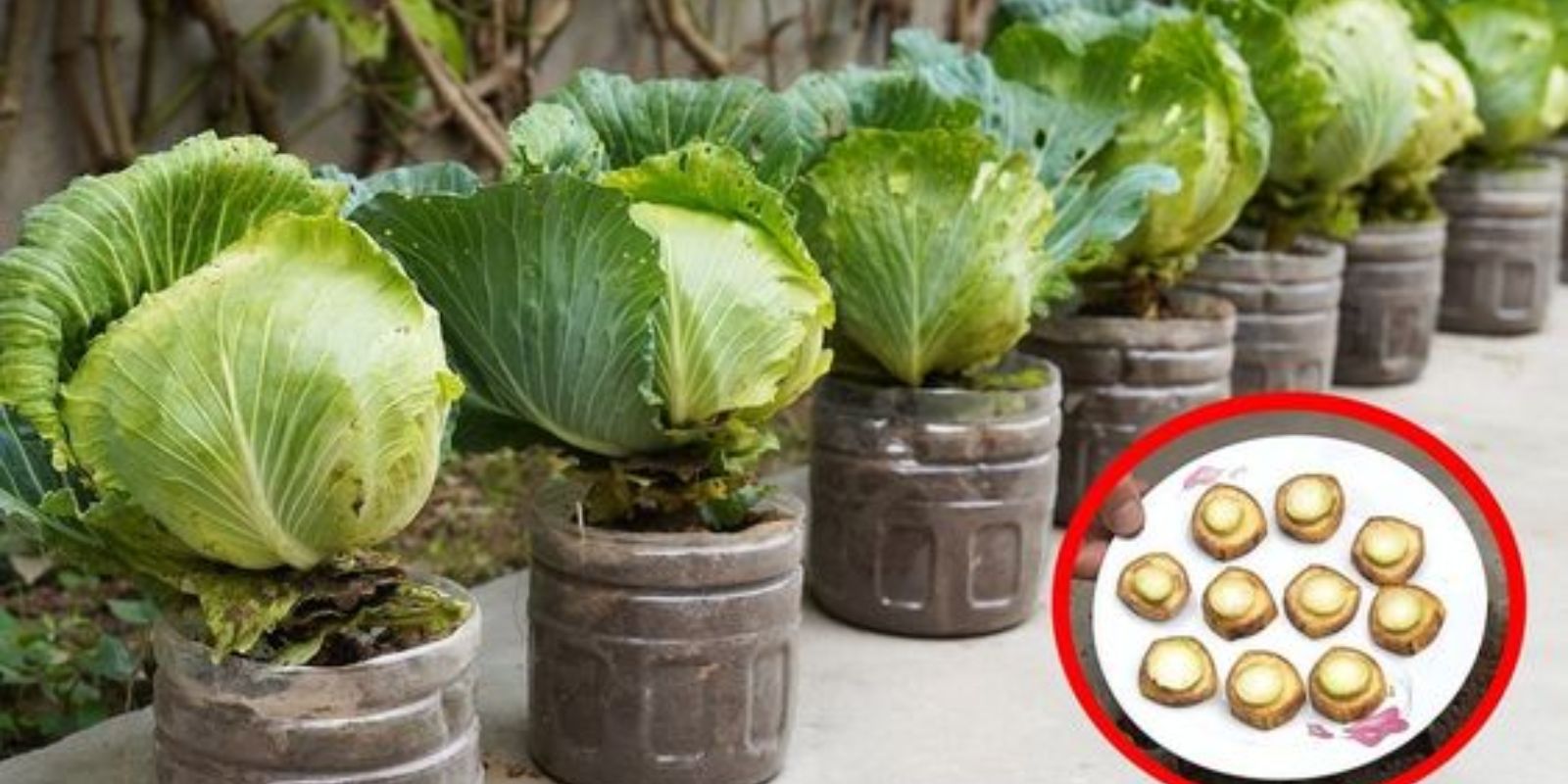Introduction:
Imagine turning empty plastic bottles into a thriving cabbage garden right in your own home. This innovative approach not only helps reduce plastic waste but also provides a space-efficient solution for growing your own fresh produce. Whether you’re an experienced gardener or a curious beginner, cultivating cabbage in plastic bottles is a rewarding and environmentally friendly project. This article will guide you through the process, offering practical steps and tips for success.
1. Gather Your Materials
To start, you’ll need a few basic materials:
- Plastic Bottles: Any empty plastic bottles will work. Two-liter soda bottles or similar-sized containers are ideal.
- Scissors or a Knife: For cutting the bottles.
- Potting Soil: Choose a high-quality, well-draining potting mix.
- Cabbage Seeds: Select your preferred cabbage variety.
- Watering Can or Spray Bottle: For watering your plants.
- Grow Lights or Sunny Spot: Ensure your plants get adequate light.
2. Prepare the Plastic Bottles
Clean the Bottles: Thoroughly wash and rinse the plastic bottles to remove any residue. This step is crucial to prevent any potential contamination from affecting your plants.
Cut the Bottles: Using scissors or a knife, carefully cut the bottles to create your planting containers. The height of the bottle should be around 8-12 inches. Make sure to leave the bottom intact to hold the soil and water.
Create Drainage Holes: Puncture several small holes in the bottom of each bottle. This will allow excess water to drain and prevent waterlogging, which can lead to root rot.
3. Add Soil
Fill the Bottles: Add a few inches of potting soil or compost into each bottle. Use a high-quality mix that is rich in organic matter and provides good drainage.
Mix in Fertilizer: For added nutrients, you can mix in a slow-release organic fertilizer or compost into the soil. This will help your cabbage plants grow strong and healthy.
4. Plant the Cabbage Seeds
Sow the Seeds: Follow the instructions on your cabbage seed packet for planting depth and spacing. Generally, you should plant seeds about 1/4 to 1/2 inch deep. If you’re planting multiple seeds in one bottle, space them about 2-3 inches apart.
Cover and Water: Lightly cover the seeds with soil and water gently. Use a watering can or spray bottle to avoid disturbing the soil too much. Keep the soil moist but not soggy.
5. Provide Adequate Light
Choose a Location: Place your bottles in a sunny spot where they will receive at least 6 hours of sunlight per day. If sunlight is limited, consider using grow lights to provide the necessary light for optimal growth.
Monitor Light Levels: Ensure that the plants are getting enough light to promote healthy growth. Rotate the bottles if necessary to ensure even light distribution.
6. Care for Your Cabbage Plants
Watering: Check the soil regularly to ensure it remains moist. Water as needed, making sure not to overwater. Proper drainage is essential to prevent root rot.
Nutrients: As the plants grow, you may need to provide additional nutrients. Use a balanced, organic liquid fertilizer according to the instructions on the label.
Pest Control: Keep an eye out for common pests such as aphids or caterpillars. If you notice any, treat the plants with organic insecticidal soap or neem oil.
7. Harvesting
Monitor Growth: Cabbage plants typically take 70-90 days to mature, depending on the variety. Keep track of their progress and look for heads that are firm and fully developed.
Harvest: To harvest, simply cut the head of cabbage off at the base. Be sure to leave some of the outer leaves intact, as they can help protect any smaller heads that may develop.
8. Benefits of Using Plastic Bottles
Eco-Friendly: By recycling plastic bottles, you reduce waste and contribute to a more sustainable environment.
Space-Efficient: Growing cabbage in bottles is ideal for small spaces, such as apartments or balconies, where traditional gardening may not be feasible.
Cost-Effective: Utilizing items you already have on hand is a cost-effective way to start a garden without investing in expensive equipment or containers.
Motivation:
Turning plastic bottles into a vibrant cabbage garden is not only an exciting project but also a meaningful way to contribute to a healthier planet. By following these steps, you can enjoy the satisfaction of growing your own fresh cabbage while making a positive impact on the environment. Share your gardening journey with others and inspire them to join you in creating sustainable and beautiful green spaces. 🌱🥬
This approach combines creativity, sustainability, and practicality, allowing you to make the most of limited space and resources. Get started today and experience the joy of home-grown cabbage in a unique and eco-friendly way!

